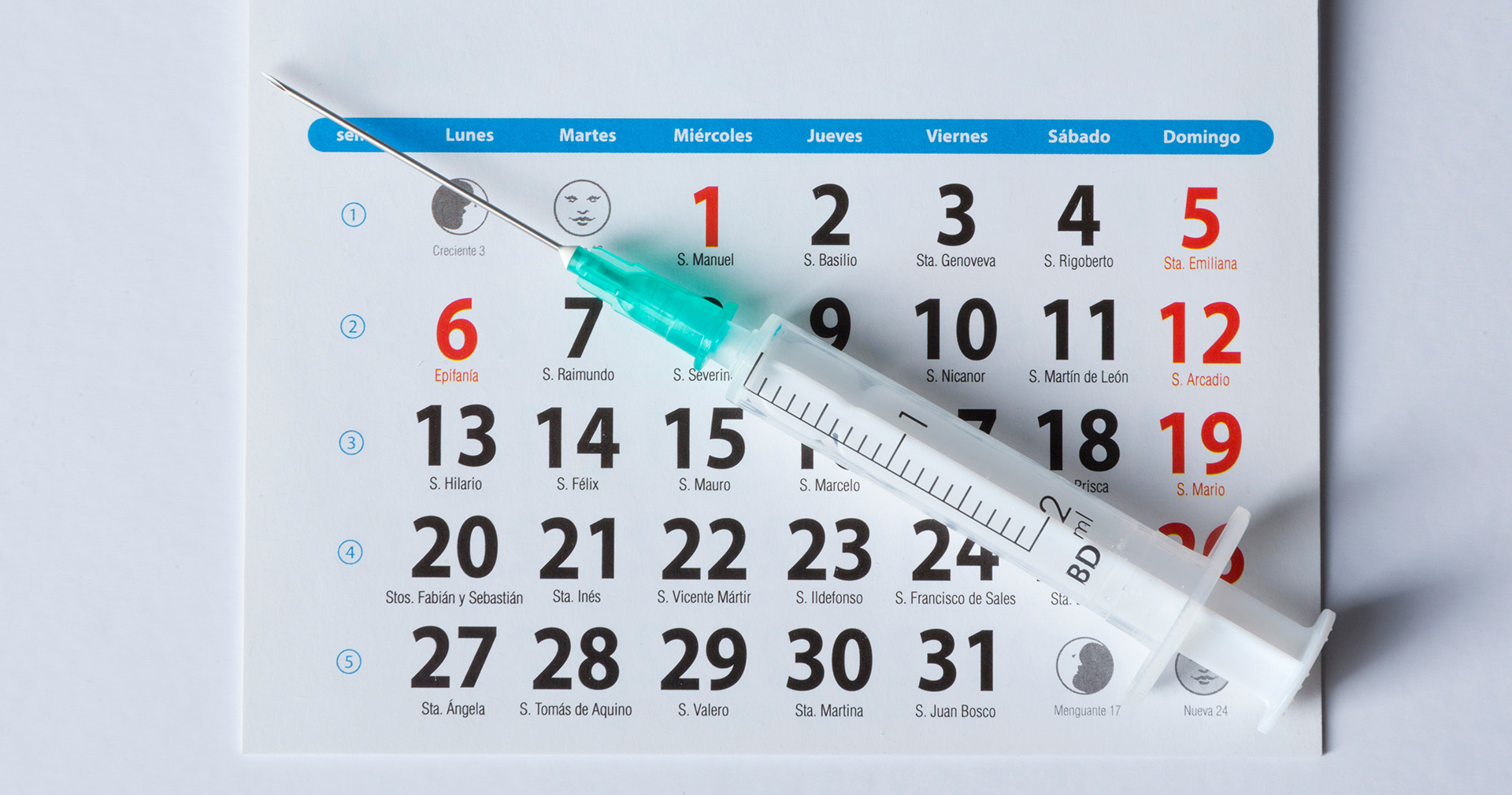How Healthcare Software Optimizes Shot Schedules and Increases Vaccination Availability

As a healthcare provider, you know that efficiently managing your practice’s shot schedule can greatly impact individual health and public safety. However, tracking and administering immunization is a time-intensive task. That’s where healthcare software comes into play.
In this article, we delve deep into the significance of vaccine scheduling and the challenges providers face. Next, we’ll explore the latest healthcare technology revolutionizing vaccination scheduling.
Finally, we’ll give you practical tips for transforming your shot schedule with software, ensuring you contribute to a healthier, more resilient community.
Understanding Shot Schedules
A shot schedule is a timetable for when different patient groups should receive various immunizations. It’s also known as a vaccine schedule. For instance, infants and toddlers receive a series of poliovirus vaccines at two months, four months, and between six and 15 months of age.
Why Shot Schedules Are So Important
Healthcare workers and certain other professions are typically required to adhere to a shot schedule. Using a schedule ensures that recipients get the right number of vaccines at the correct intervals for them to be effective.
This is particularly important for children entering daycare or school. Immunizations prevent them from becoming sick or even dying of avoidable illnesses. In some cases, vaccines also prevent the spread of disease. We can enjoy herd immunity by vaccinating people according to the recommended shot schedules.
Herd immunity is when enough people have been vaccinated, and that immunity is extended to others who have not been vaccinated. This group includes neonatal infants and people with disease-compromised immune systems. It also protects chemotherapy and transplant patients. Their immune systems have usually been destroyed by treatments.
When everyone is on the same vaccine schedule, it makes it easier to check immunization status. Parents know when it’s time for their kids to have the next round of shots or to start a new protocol. Adult patients and workers required to be immunized also know when they need boosters or a new vaccine.
Healthcare Provider Challenges with Vaccine Scheduling
The recent coronavirus pandemic illuminated some of the hurdles in maintaining shot schedules:
- Availability of the latest vaccines for those that change
- Healthcare provider and insurance confusion about schedules
- Cost of immunizations when not covered by insurance
- Storage issues for vaccines requiring specific environments
- The anti-vaccine movement and immunization misinformation
The contagiousness of measles demands a 95% community immunity rate. And yet vaccine distrust is rising, particularly in some parts of the US. In those areas, it’s possible to see up to 43% of a student population claiming exemptions to one or more vaccines.
Other challenges that have persisted before COVID include:
- Language, religion, and socioeconomic barriers
- Allergies and other legitimate adverse reactions to vaccines
- Formulary restrictions when multiple products are options
- Parents creating their own “a la carte” vaccine schedules
- Provider continuing education to keep up with vaccine changes
- Agency or specialty association disagreements about optimum scheduling
- Vaccine ingredient shortages and vaccine allocations
- Medical record consistency, especially across systems and locations
RELATED ARTICLE: How the Right EHR Can Save Your Practice Money

The Role of Healthcare Software in Optimizing Shot Schedules
Given all the challenges listed above, how can you, as a clinic manager, biller, or provider, create better adherence to shot schedules? This is a particular problem for small offices. One person may serve in multiple roles, including both caregiving and administration.
Maintain Electronic Health Records
The first step is to ensure health records are accessible and current. Most practices have now switched to electronic record systems, which helps. However, that still requires human input during or immediately following appointments. So, clinic staff must all be on the same page regarding accuracy and timeliness.
Getting records from different institutions is a related problem. First, try having the patient submit permission for the secure transfer of external health records to your practice.
Maximize Patient Reporting Methods
What if you cannot establish a HIPAA-compliant digital connection to these organizations? You may have to rely on patient reporting regarding previous vaccinations.
This was another challenge exacerbated during the recent pandemic. Many people initially elected to get COVID-19 vaccines where they were available. This was primarily at pharmacies.
Some states, like California, maintained a statewide digital vaccine registry. But others had no comprehensive records.
What are solutions if patients have difficulty remembering past vaccines? Some potential resources, besides state data repositories, include:
- City or county health departments
- Schools and colleges/universities
- Military records
- Employers and previous employers
- Past providers’ records
- Government and immigration agencies
- Baby books and parent memorabilia
Moving forward, encourage patients to keep accurate records for off-site immunizations. You can facilitate this by giving them their own immunization ledger in which to record vaccine information. Ask them to bring this to appointments for transfer into their electronic health records.
Automate Vaccine Alerts and Reminders
All the above pertains to your practice records. Next is the challenge of keeping patients on schedule to get shots at the proper times.
Automating schedules and reminders is the way to go here. Records should be flagged to alert patients or their parents in real-time that a vaccine is due when they schedule an appointment.
You can even send email or text message alerts before the patient calls to schedule. The more you integrate your patient database with other automated systems, the easier this will be.
Double-Check When in Doubt
It’s wise to build in some redundancy here. Have the nurse or medical assistant double-check about vaccines when obtaining a patient history before being seen. In some instances where a patient can’t remember, you may have to resort to a titer to see if a new shot or booster is needed. Make sure the lab results are transferred to the EHR.
Anticipate Trends, Changes, and Shortages
Finally, your practice must be proactive about anticipating and adjusting to changes in shot schedules. If your practice is solely pediatrics, staying on top of childhood vaccines is pretty simple. But if you run a family practice or see a wide range of ages, it gets more complicated.
Even with a subspecialty, vaccine recommendations change regularly. Think COVID or influenza, which are evolving pathogens. There is also the risk that certain vaccines (or administration materials, like syringes) may be in short supply.
For example, tetanus and RSV vaccines are currently delayed or allocated. Supply may vary based on your geographic location and how the manufacturer chooses to allot batches. Therefore, you want to use your software to monitor vaccines carefully and alert you before they run dangerously low.
You can also use software to predict increased periods of vaccine need fairly accurately.
RELATED ARTICLE: How Immunization Registries Benefit Medical Practices and Their Patients

Increasing Vaccination Availability through Software Solutions
Most issues with vaccine availability are out of your control. However, you can improve some parts of the equation in your practice.
Using practice management software, you can perform data analysis and report on vaccine trends and supply. This is especially helpful with seasonal illnesses. Examples include influenza and viruses like COVID-19, which have fairly predictable peaks and troughs.
While there are national trends, pay attention as well to your own internal trends due to factors like:
- Geography and weather
- School start dates
- Camp physical schedules
- Holiday and vacation times
- HSA spending deadlines
- Pharmacy bulk buy-in periods
- Outbreaks of COVID strains
- Agricultural risks for zoonotic diseases
This way, you can shore up your supply of high-demand vaccines to meet patient needs. You can also implement patient education and awareness campaigns before surges.
Doing this will reduce wait times and prevent patient frustration, which benefits them. This helps your practice by engendering better patient satisfaction and positive reviews.
Other ways software can assist your practice include:
- Clinic staffing for heavy patient days
- Scheduling vaccine appointments
- Distribution of immunizations to satellite clinics
- Flagging pre-procedure or pre-operative patients to check immunizations
- Double-checking insurance coverage and preauthorizations
- Connecting with mobile apps for reminders, telehealth, etc.
- Managing vaccine expiration dates
- Ordering shot administration supplies, like syringes and needles
This reduces wasted staff hours and lets providers focus more on patient care.
Future Trends in Healthcare Software for Shot Schedules
What’s on the horizon for healthcare software regarding vaccine scheduling?
- More patient self-scheduling for vaccines, similar to what they can do now at many pharmacies
- Use of chatbots, artificial intelligence, and automated processes to assist and alert patients
- Vaccine integration with contact tracing for disease outbreaks or future pandemics
- Improved reporting portals for both patients and healthcare providers for vaccine adverse events
- Sending local data to the right place for rapid scaling of manufacturing, if needed
- Better supply chain management and batch location identification for reporting, returns, or recalls
- Connection with the Internet of Things (IoT) via containers that identify when vaccine supplies are running low
- Wearable devices to ascertain vaccine status or even enable monitoring for side effects
FROM ONE OF OUR PARTNERS: How Remote Patient Monitoring Helps Seniors Age in Place
For Your Healthcare Practice: Key Tips for Using Software to Enhance Shot Schedules
Ready to enhance vaccine scheduling with software for your practice? Here are some expert tips to get you started:
- Are you still in the process of automating? Choose software that includes the best features for vaccine scheduling and related tasks. This is crucial in certain specialties like pediatrics or geriatrics, where vaccines are in high demand.
- Survey your patients to see what would help them increase vaccination rates. For instance, you may uncover unknown factors that you can solve with automated scheduling or alerts.
- Use your software to create marketing campaigns and newsletters around vaccine compliance. Patient education is half the battle for getting shots on schedule.
- Consider using your software to identify slower days during peak demand times for vaccines (e.g., back to school). Then, schedule a vaccine clinic with efficient back-to-back shot appointments. It’s easier for staff than placing them between exams, and patients will have much shorter wait times.
- Connect with your city, county, state, and federal agencies to stay abreast of outbreaks or changes to vaccine protocols. You can also update allocated vaccines so that all staff know about the shortages and triage shots accordingly.
FROM ONE OF OUR PARTNERS: How Healthcare Practices Are Saving Money with Technology